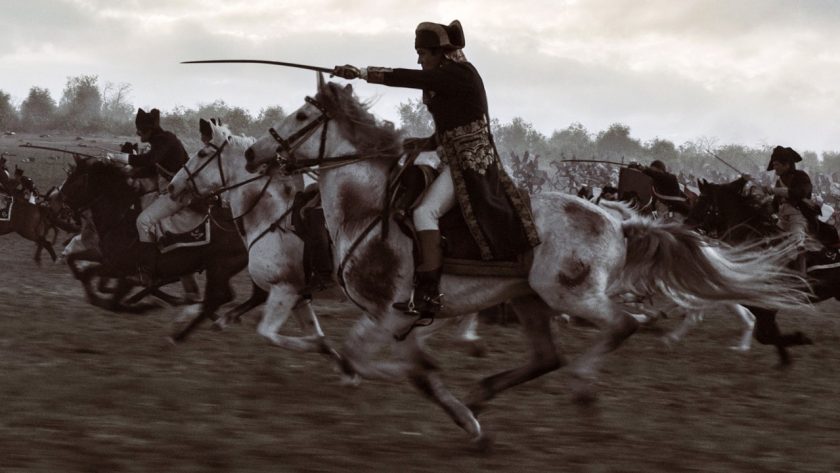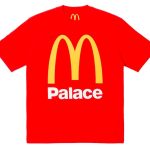The Naprous’ played a role in every equine element of Napoleon‘s production, from ensuring that the tack, harnesses and saddles used were period-appropriate, to choreo and performance training. “Our collection is enormous. We have over a thousand horse-drawn carriages now,” Camilla says. “We worked with a saddler on Napoleon. And with the art department, too, to create the tack that was required.”
As for the big battle sequences? The vast majority of what we see on screen is done in-camera, Camilla confirms, with little digital duplication. That’s except for scenes where horses were maimed, fell over, or were otherwise injured; that’s visual effects (breathe, pony lovers). “The last time that I did 100 horses would have been Game of Thrones,” Camilla says. “When you stood on the battlefield (for Napoleon‘s Waterloo scene),” Daniel continues, “it was gigantic.” The ground for the Waterloo scene was completely re-turfed before shooting commenced, to prevent injuries to the animals from natural hazards like rabbit holes.
Napoleon‘s battle of Austerlitz, in which Napoleon lures a battalion of Russian cavalry onto a frozen lake, understandably presented unique challenges for the horsemasters. “We never actually collapsed through the ice, because that’s beyond what we’d ever want do with our horses,” Daniel explains. Instead, they built ramped water tanks into the set which the horses could swim inside, providing the illusion of submersion under cannon fire. But first they had to teach the horses to swim, which they did at horse-friendly swimming facilities.
The Devil’s Horsemen even provided all of the riders you see on screen, aside from the top-billed actors. That’s right: every extra. “I think we were sitting with around the 140, 150 mark (of people) in our team. They’re all regular players,” Camilla continues. “We’re very proud that, when you work for us, horses or people, you stay with us and you learn and you grow together,” Daniel adds. “We know the individuals, we know the character of the horses, we know the character of the people.”
While Phoenix had already ridden horses for the screen on the Western The Sisters Brothers, it doesn’t exactly stick in the mind like riding a bike does — but he soon got back up to galloping speed. “He was fantastic. Three-quarters of shooting was spent with him on horseback. It’s for any actor, every day, you know,” Camilla says. “Glueing those personalities together is really interesting. Like with actors, sometimes you don’t have chemistry. So you’ve got to look at that very early on in training, to see how we’re going to create these relationships.”



